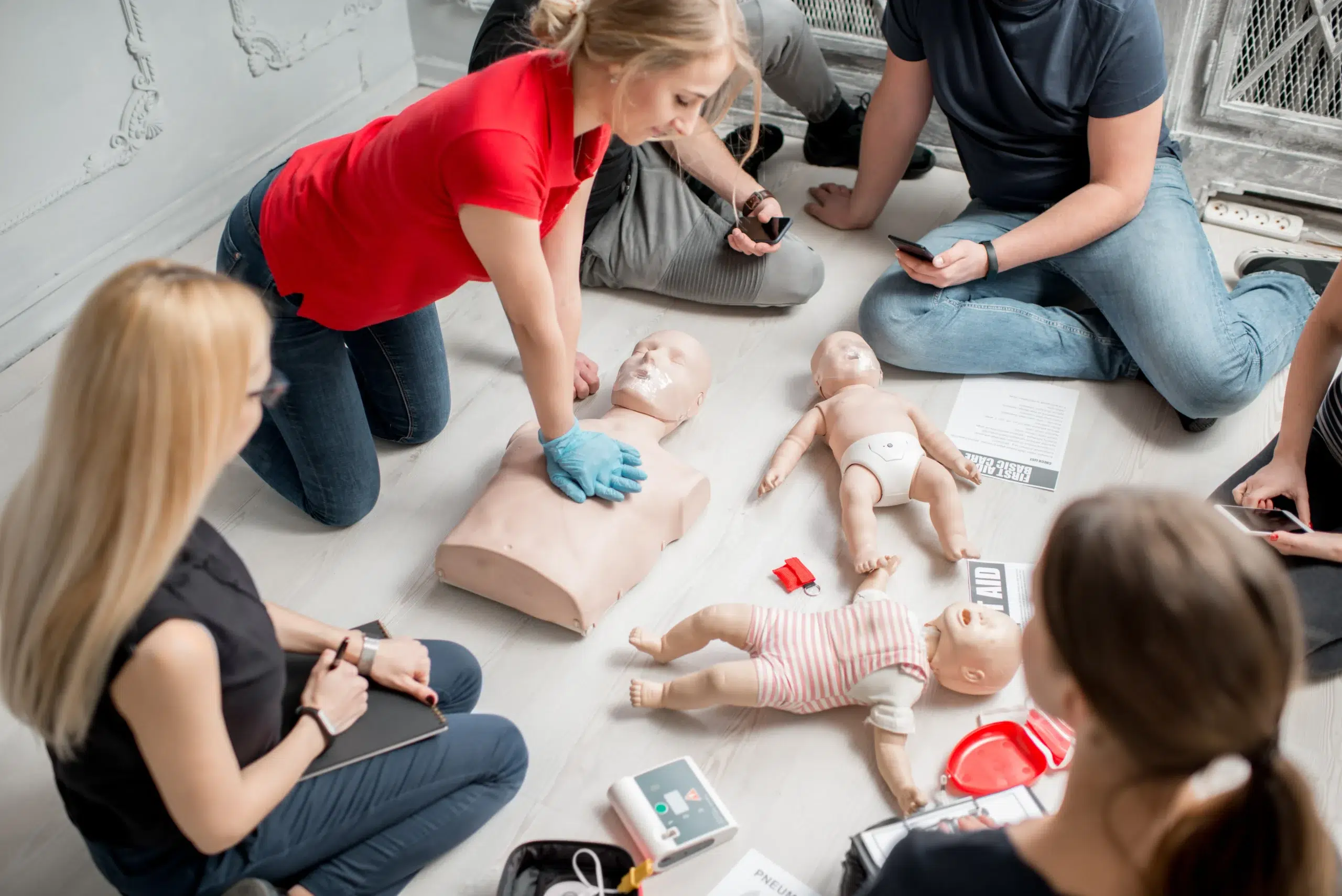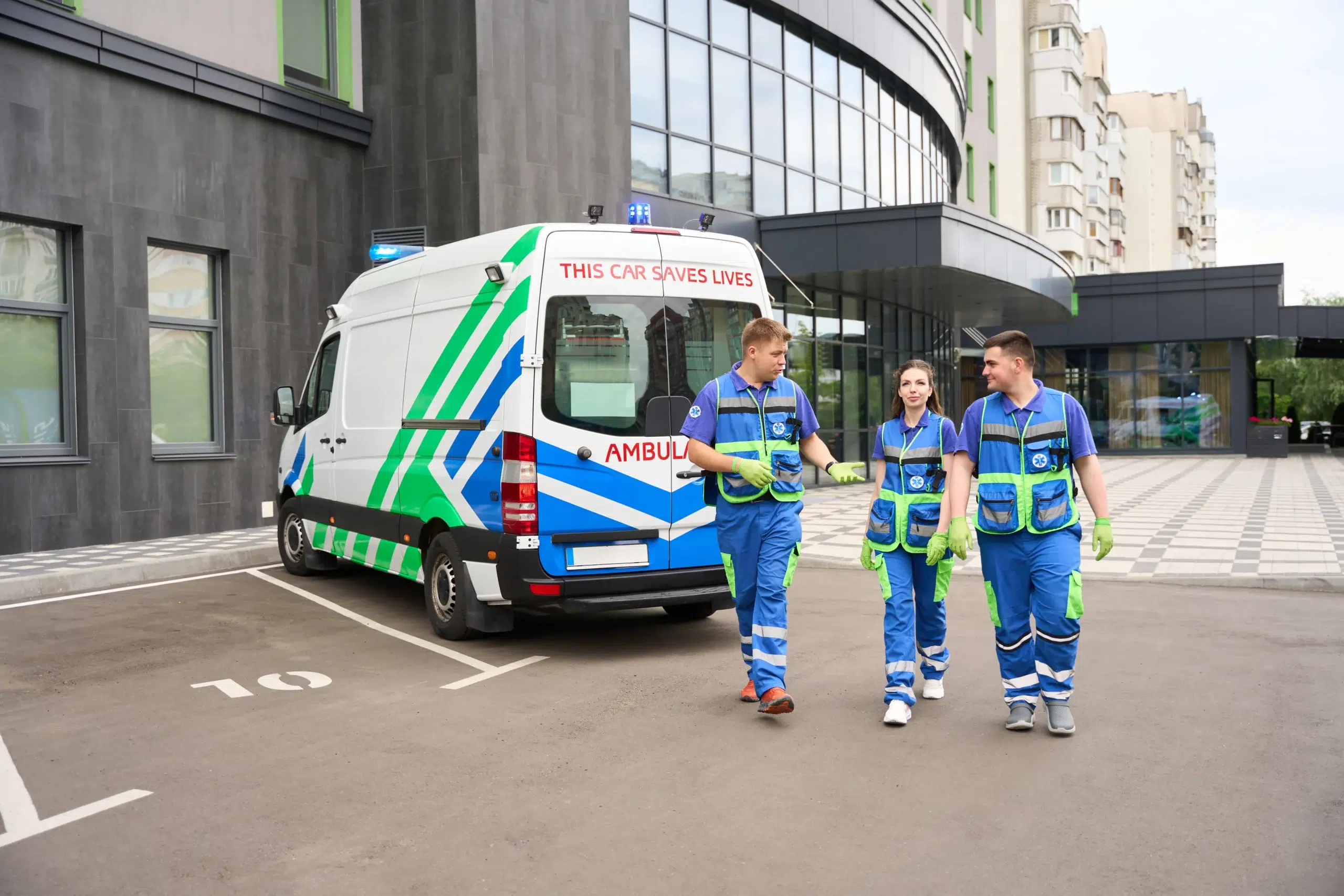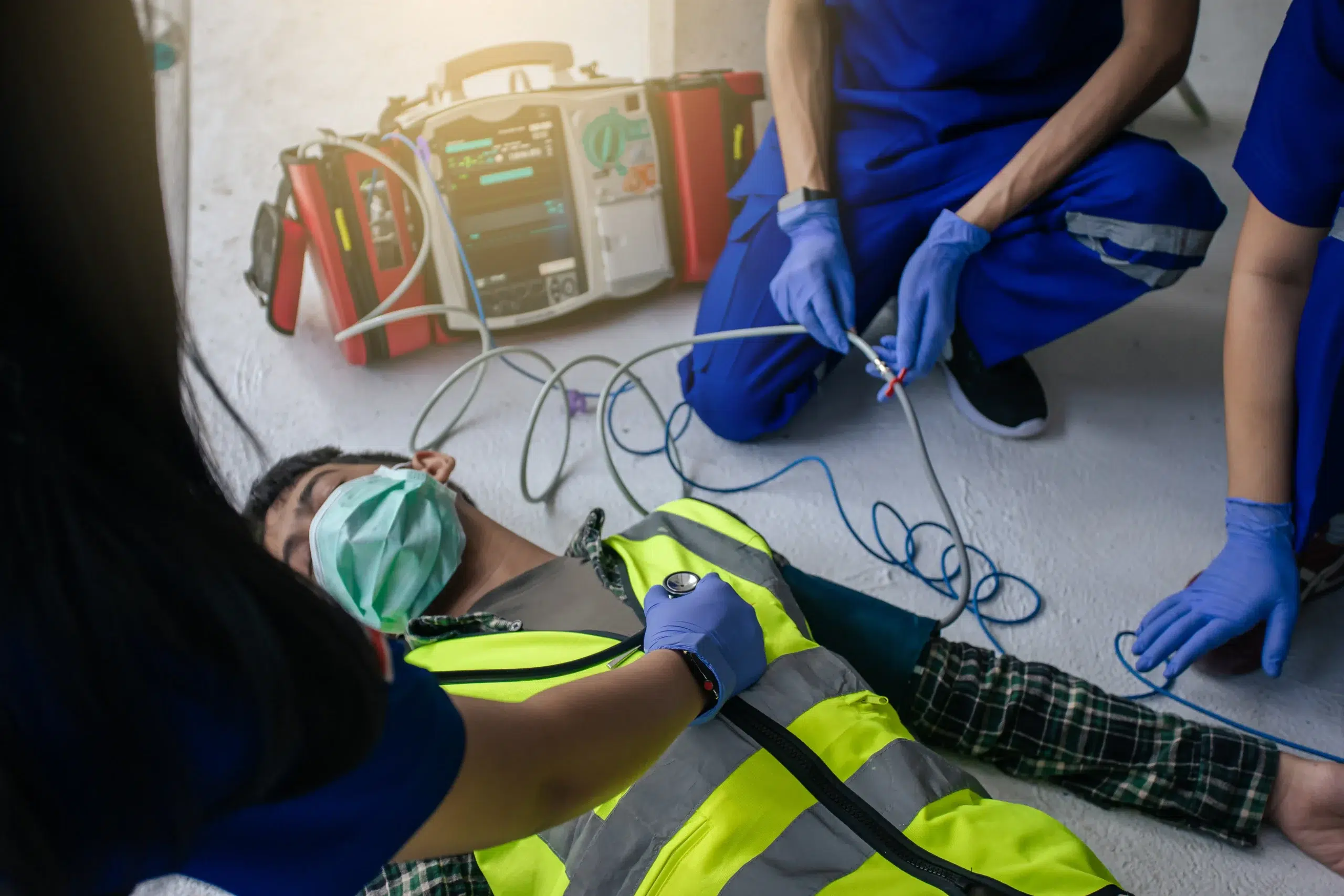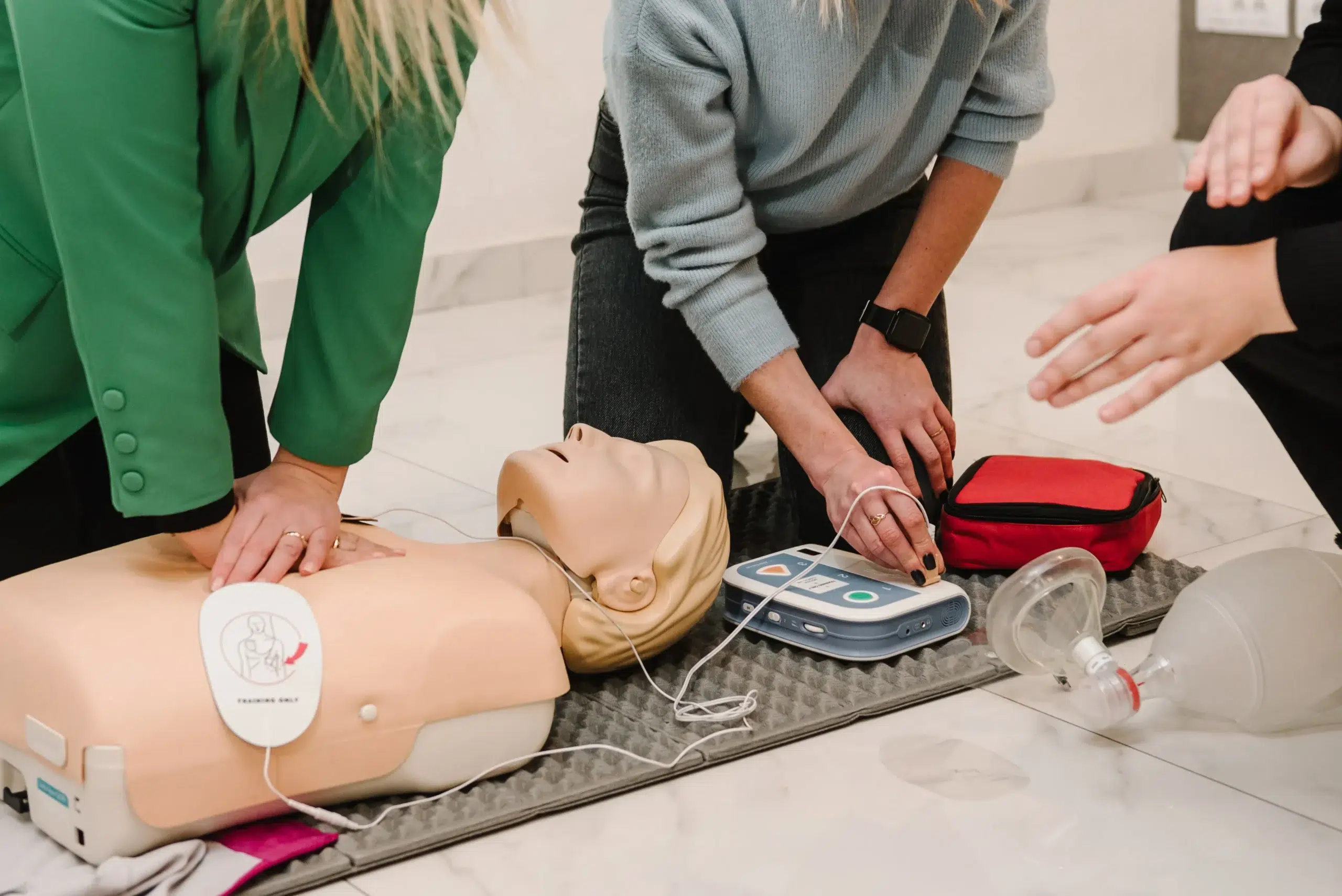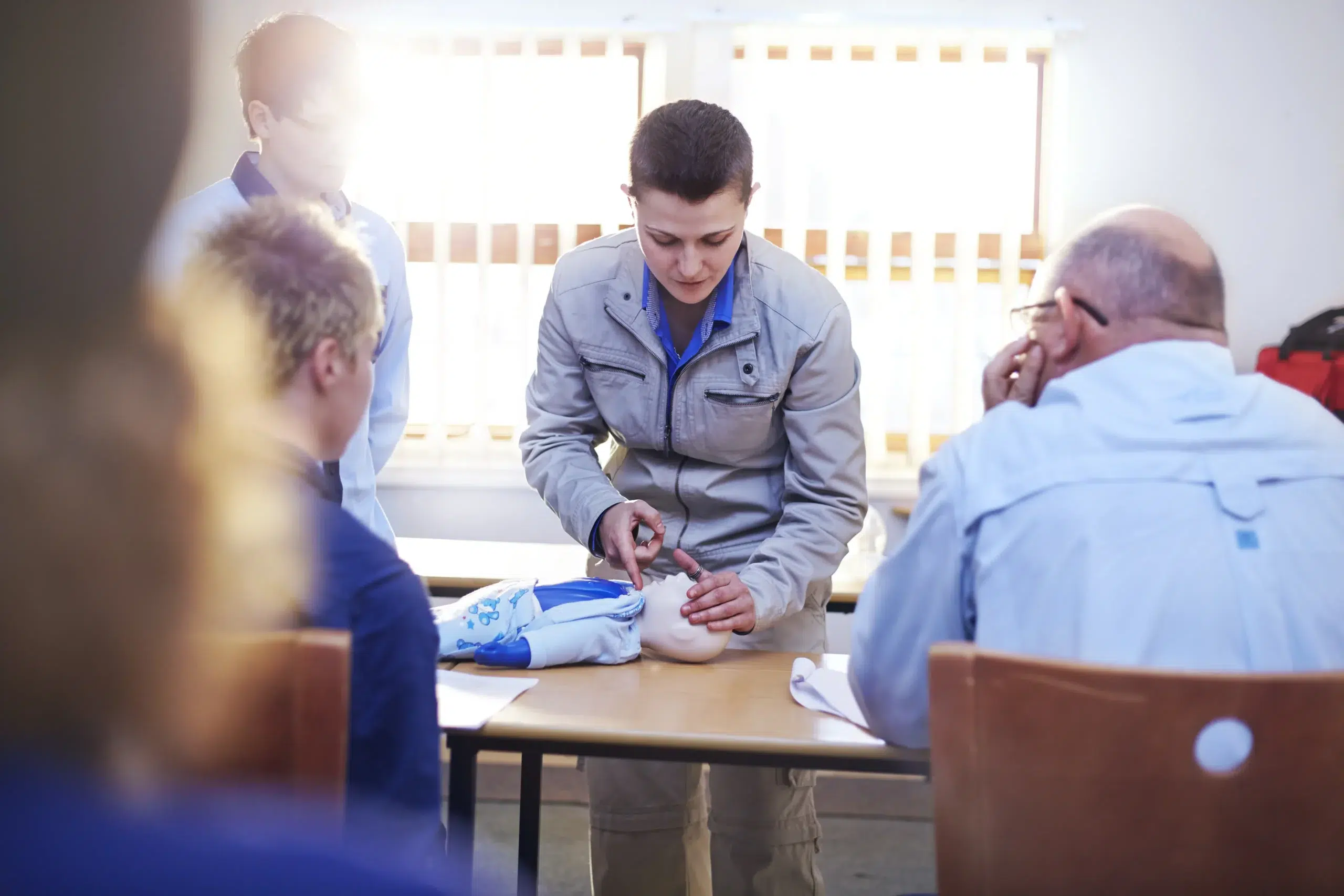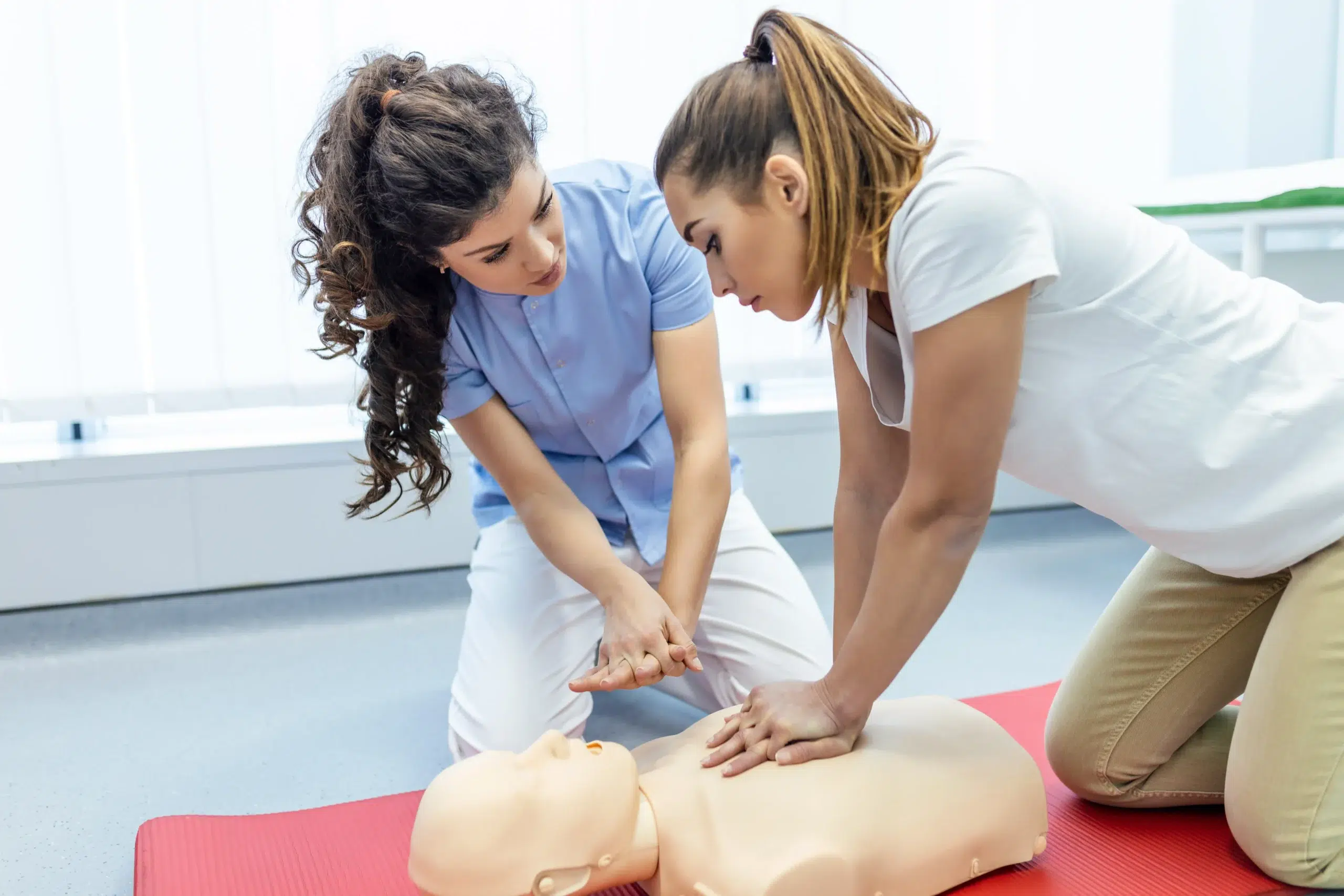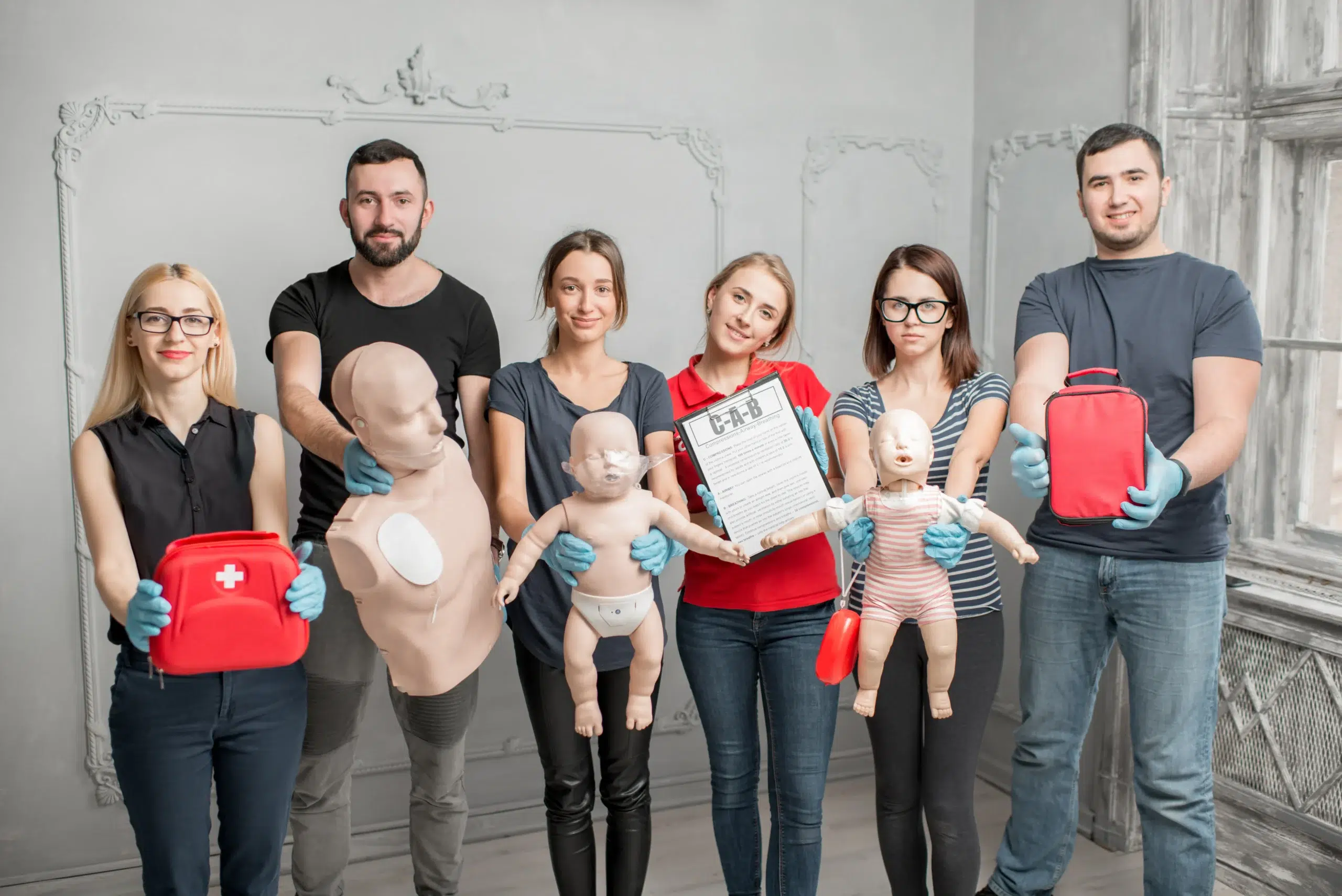Knowing how to perform Basic Life Support (BLS) can be the difference between life and death in a medical emergency. It’s a powerful skill set that equips you to respond effectively to critical situations, providing immediate care until professional help arrives. This guide will explore the ins and outs of BLS certification, from understanding the core components of the training to finding the perfect “BLS classes near me” that fit your schedule and learning style. Whether you’re a healthcare provider, a caregiver, or simply someone who wants to be prepared, we’ll help you find the resources and support you need to become BLS certified.
Key Takeaways
- BLS certification provides essential life-saving skills: Whether you’re a healthcare provider or another professional, BLS training equips you with the skills to handle emergencies confidently. Choose a learning format—in-person, blended, or online—that suits your lifestyle.
- Select the right BLS course by considering key factors: Prioritize AHA-approved training, research provider credentials, and opt for a format that aligns with your learning style and career needs. Local, in-person classes offer hands-on practice and direct instructor feedback.
- Maintain your skills through regular BLS renewal and practice: Keep your certification current and your skills sharp by staying informed about the latest guidelines and seeking continuing education opportunities. Consistent practice ensures you’re always ready to respond effectively.
What is BLS?
Basic Life Support (BLS) is a critical certification for healthcare providers like doctors, nurses, EMTs, and other first responders. It goes beyond basic CPR for the general public, giving professionals the advanced skills they need to handle life-threatening emergencies. BLS covers core techniques like high-quality CPR, using an AED, and managing airway obstructions and breathing problems. BLS certification emphasizes teamwork and clear communication during emergencies. This training gives healthcare workers the knowledge and confidence to act quickly and effectively in critical situations like cardiac arrest. The goal is to deliver immediate, life-saving care that can dramatically improve a patient’s chances of survival. BLS training often includes realistic simulations to practice these essential skills. This hands-on experience helps build muscle memory and reinforces the importance of a rapid response.
BLS Class Types
Choosing the right BLS class format depends on your learning style, schedule, and preferences. Let’s explore the three main types of BLS classes: in-person, online, and blended learning.
In-Person BLS
In-person BLS classes offer a hands-on learning experience, ideal for those who thrive in interactive environments. These classes are typically held in small groups, providing personalized instruction and direct interaction with a certified instructor. This format allows for immediate feedback, clarification on key concepts, and ample opportunity to practice essential skills like CPR and using an AED. Many organizations, including the American Red Cross, offer in-person BLS certification and renewal courses. The focus on hands-on training in a supportive environment, like those offered at CPR Certification Brooklyn, ensures you gain the confidence and competence to respond effectively in real-life emergencies.
Online BLS
Online BLS courses offer flexibility and convenience, allowing you to learn at your own pace and on your own schedule. You can study the theoretical components anytime, anywhere, making it a great option for busy professionals or those with limited access to in-person training locations. However, keep in mind that the American Heart Association (AHA) requires an in-person skills assessment to complete the online BLS certification process. Online courses often streamline the learning process, and many don’t require a physical textbook, like those offered through LA Career College.
Blended BLS Learning
Blended learning combines the best of both worlds: the convenience of online learning with the practical application of in-person skills sessions. You’ll complete the theoretical coursework online at your own pace, then attend a shorter, in-person session to demonstrate your skills and receive feedback from an instructor. The Red Cross offers this blended format for CPR and BLS. Providers like A-B-CPR emphasize the critical role of practical training in their blended courses, ensuring you develop both the knowledge and the skills to handle real-world emergencies.
Find Reputable BLS Certification
Finding the right BLS certification course is crucial for your career and your confidence in saving lives. Here’s what to look for:
AHA-Approved BLS
The American Heart Association (AHA) sets the gold standard for BLS Certification. Many employers, including hospitals and clinics, require AHA-approved certifications to ensure their staff is trained to the highest standards. Look for training centers offering AHA-approved courses. This guarantees you’re learning the most up-to-date, evidence-based practices.
Red Cross-Certified BLS
The American Red Cross also offers BLS certification. While not as widely required as AHA certification, Red Cross training is still a valuable option, particularly for those outside of healthcare settings or individuals seeking a refresher course. Check with your employer to see if Red Cross certification meets their requirements.
Local BLS Training
Finding a local training center offers several advantages. In-person training provides hands-on practice and allows you to ask questions and receive immediate feedback from certified instructors. Plus, local classes often fit better into busy schedules. When searching for “BLS classes near me,” look for providers like Pleasant Hill CPR Classes that align with AHA standards. This is often crucial for job acceptance in many healthcare settings.
Evaluate Provider Credentials
Before signing up for any BLS class, do your homework on the training provider. Check their website for instructor credentials and ensure the course is explicitly AHA-approved. Insist on in-person, practical training to build essential, hands-on skills. Don’t hesitate to contact the provider with any questions. A reputable provider will be happy to address your concerns and provide further information about their courses.
BLS Certification: Cost & Value
Getting your BLS certification is an investment in your skills and your future. Let’s break down the costs associated with BLS training and explore the incredible value it provides.
Factors Affecting BLS Cost
Several factors influence the cost of your BLS certification. Things like the course format (online, in-person, or blended), your location, and the training provider all play a role. While cost is often a consideration, remember that BLS training equips you with life-saving skills—a value that extends far beyond the price tag. Explore options like our low price guarantee to make training more accessible.
Average BLS Cost
Generally, in-person BLS certification and recertification courses average around $55 to $75. Online BLS certification can be slightly higher, sometimes ranging up to $85. These prices typically cover all materials, including your study guide and certification card. At Pleasant Hill CPR Classes, we offer competitive pricing and discounts for groups. Contact us for the most up-to-date pricing on our BLS courses.
What Your BLS Fee Covers
Your BLS training fee covers more than just classroom time. It provides you with essential knowledge and skills, like performing high-quality CPR, using an AED, and responding to various medical emergencies. The curriculum is often developed and reviewed by experts, like the American Heart Association, ensuring you receive up-to-date information and training that reflects the best practices in emergency care. You’ll receive your official BLS certification card upon successful completion of the course, demonstrating your proficiency to employers and colleagues.
BLS Class Format & Duration
Typical BLS Class Structure
BLS certification courses cater to healthcare providers, with options available for aspiring BLS instructors. Two primary course formats exist: traditional in-person classes and blended learning, which combines online coursework with hands-on skills sessions. Organizations like the American Heart Association offer both formats to accommodate various learning styles and schedules. In-person classes provide a structured, interactive learning environment, while blended learning offers flexibility for busy professionals.
BLS Time Commitment
Plan for roughly three hours to complete a BLS course, regardless of whether you choose in-person or blended learning. This timeframe covers instruction, demonstrations, practice scenarios, and testing. Your BLS certification is typically valid for two years, after which you’ll need to recertify. Pleasant Hill CPR classes offer convenient daily certifications to fit your schedule.
BLS Skills Assessment
An in-person skills assessment is a mandatory component of AHA BLS certification, irrespective of the chosen course format. This practical evaluation ensures you can perform the necessary techniques learned during the course. Be cautious of programs claiming AHA certification without a skills check—they are likely not legitimate. The in-person assessment is crucial for demonstrating competency and receiving valid BLS certification. This typically involves demonstrating CPR on a manikin and responding to simulated emergencies under the supervision of a certified instructor. Contact us to learn more about our skills assessment process.
Choose the Right BLS Class
Picking the right BLS class isn’t just about finding the closest one; it’s about finding the best fit for you. Think about your schedule, how you learn best, and what you need the certification for. These factors will help you narrow down your options and choose a class that sets you up for success.
Consider Your Learning Style
We all learn differently. Some of us thrive in a hands-on environment, while others prefer to absorb information at their own pace. Think about what works best for you. Do you prefer in-person instruction where you can ask questions and practice skills immediately? Or do you learn better online, where you can review materials and work through the content at your own speed? The American Heart Association offers a variety of BLS courses designed for different learning styles, so you can find one that matches your preferences. Pleasant Hill CPR classes offer both in-person and blended learning options.
Class Schedule Flexibility
Let’s be honest, life gets busy. Between work, family, and other commitments, finding time for a BLS class can be tricky. Look for courses that offer flexible scheduling options, like weekend or evening classes. Pleasant Hill CPR Classes offers daily certification courses to accommodate busy schedules. This flexibility can make a big difference in making BLS certification attainable.
Career Requirements for BLS
BLS certification is often a requirement for healthcare professionals, including doctors, nurses, and EMTs. It covers core life-saving skills like CPR, along with techniques for managing cardiac arrest and airway obstructions. Before signing up for a class, double-check the specific requirements of your workplace or desired career path. Make sure the course you choose aligns with industry standards and is accepted by your employer. For many healthcare providers, an AHA-approved BLS certification, like those offered at Pleasant Hill CPR Classes, is essential. Our courses meet the highest standards for healthcare professionals and provide the training you need to excel in your field. We also offer a low price guarantee, so you can get the quality training you need without breaking the bank. Contact us today to learn more about our BLS courses and find the perfect fit for your needs.
BLS Certification Process
Getting your BLS certification is a straightforward process. Here’s what you can expect:
Prepare for Your BLS Class
Before your BLS class, familiarize yourself with basic life support skills. Even a quick review of techniques will build your confidence for the course. Resources like those available from Medicus Training offer helpful information and online courses to get you started. Knowing the latest guidelines will make the class that much easier. Regular practice is key for any skill, especially life-saving ones.
BLS Course Content
BLS training gives you the essential skills to respond to life-threatening emergencies, with a focus on high-quality CPR and AED use. You’ll learn to recognize these emergencies and take effective action. The course covers specific techniques for infants, children, and adults, so you’re prepared to provide appropriate care for people of all ages. My CPR Certification Online provides a helpful overview of BLS training.
BLS Exam & Certification
You’ll receive your BLS certification after completing the training, confirming you’ve learned the necessary skills to handle emergencies. To maintain your certification, you’ll need to renew it periodically by taking another BLS course from an approved provider. Save a Life by NHCPS offers a helpful guide on BLS renewal and also provides courses. This ensures your skills stay current, so you’re always prepared to help when needed.
Maintain Your BLS Certification
Once you’ve earned your BLS certification, staying current is key. Your skills need to be sharp in any emergency, so regular renewal and continuing education are essential.
BLS Renewal
BLS certification doesn’t last forever. The American Heart Association (AHA) requires healthcare providers to renew their BLS certification every two years. To keep your credentials active, you’ll need to take a BLS renewal course. If your current certification is still valid (at least 30 days from expiring), an online BLS renewal course can be a convenient option. Check with your employer or certifying organization for specific renewal requirements and find a renewal course that fits your schedule.
Continuing Education for BLS
Even with a current certification, regular practice is crucial for maintaining proficiency in BLS. Think of it like any other skill—consistent use and refinement are essential for confident and effective execution in real-life situations. Online resources and courses can help you stay updated on the latest BLS guidelines and techniques. Regularly practicing your BLS skills ensures you’re always prepared to respond effectively in a critical situation. Staying informed about the latest guidelines is also important, as techniques and best practices can evolve. Look for opportunities to refresh your knowledge and skills between renewals to maintain your confidence and preparedness.
Benefits of Local BLS Training
Choosing a local BLS class offers distinct advantages, especially for hands-on learners. It’s more than just convenient—it creates a richer, more supportive learning environment. Here’s why:
Hands-on BLS Practice
BLS skills require practice. In a local class, you get to perform CPR on mannequins, practice with AEDs, and work through various emergency scenarios. This hands-on training builds muscle memory and confidence, crucial for effective BLS in real-life situations. Regular practice and refresher training are essential to maintain proficiency, ensuring the highest chance of survival for cardiac arrest victims. Think of it like any other skill—the more you practice, the better you become.
Immediate Feedback & Support
Local classes provide instant feedback from certified instructors. They can correct your technique in real-time, answer your questions immediately, and offer personalized guidance. This direct interaction accelerates your learning and helps you master essential skills quickly. Real-time feedback has been shown to significantly improve learning outcomes in BLS training programs.
BLS Networking
Local BLS classes connect you with other professionals in your community. This can be invaluable for sharing experiences, discussing best practices, and building your professional network. These connections can be especially helpful for career advancement and staying informed about the latest BLS guidelines. Joining professional organizations can further expand your network and provide access to ongoing support and resources.
Pleasant Hill CPR: Your Local BLS Provider
If you’re in the Pleasant Hill, Walnut Creek, or Concord area and searching for “BLS classes near me,” look no further. Pleasant Hill CPR Classes offers a comprehensive range of American Heart Association training courses, including BLS, ACLS, PALS, CPR and First Aid, and more. We prioritize convenient scheduling, offering daily certification courses to fit your busy lifestyle. Our commitment to customer service ensures a comfortable and supportive learning environment.
Our BLS Courses
We provide a variety of BLS courses designed for healthcare providers, including doctors, nurses, and medical students, as well as other professionals like teachers, coaches, and childcare providers. These courses cover essential lifesaving skills for adults, children, and infants, including CPR, AED use, and how to recognize and respond to life-threatening emergencies like heart attacks and strokes. Our BLS certification courses use a blended learning format, combining online coursework with in-person skills sessions for a well-rounded learning experience. This approach allows you to learn the material at your own pace online and then practice your skills in a hands-on setting with our expert instructors.
RQI Programs
For healthcare professionals seeking a streamlined and efficient path to BLS certification, our RQI (Resuscitation Quality Improvement) program is an excellent option. RQI offers a flexible, skills-based approach that focuses on mastery and retention of crucial resuscitation skills. This innovative program allows medical professionals to complete their RQI training at their own pace and maintain their skills through regular practice sessions. It’s a modern and effective way to stay up-to-date with the latest BLS guidelines.
Low Price Guarantee & Discounts
At Pleasant Hill CPR Classes, we believe that high-quality lifesaving training should be accessible to everyone. We offer a low price guarantee on our courses, ensuring that you receive the best possible value. We also provide discounts for group classes, making it a cost-effective solution for organizations and businesses. Contact us today to learn more about our current promotions and how we can help you achieve your BLS certification goals.
Related Articles
- BLS Courses Pleasant Hill: Your Certification Guide – Pleasant Hill CPR Classes
- BLS Certification in Concord: Courses & Providers – Pleasant Hill CPR Classes
- BLS Training in Concord: Your Comprehensive Guide – Pleasant Hill CPR Classes
- BLS Renewal in Concord: Your Complete Guide – Pleasant Hill CPR Classes
- Find the Best BLS Courses in Concord, CA – Pleasant Hill CPR Classes
Frequently Asked Questions
What’s the difference between BLS and CPR?
CPR (Cardiopulmonary Resuscitation) is a basic lifesaving technique that anyone can learn. BLS (Basic Life Support) builds upon CPR, adding advanced skills for healthcare professionals. BLS covers a broader range of emergencies and emphasizes teamwork, effective communication, and the use of equipment like AEDs. It’s designed for professionals working in healthcare settings.
How long does my BLS certification last, and how do I renew it?
BLS certification is typically valid for two years. To renew, you’ll need to take a recertification course before your current certification expires. Many providers offer renewal courses, often with a shorter format than the initial certification course. Check with your employer or the organization that issued your certification for specific renewal requirements.
What if my BLS card expires?
If your BLS certification expires, you’ll need to retake a full BLS certification course. You can’t simply renew once it’s expired. It’s always best to plan ahead and renew before your card expires to avoid any lapse in your certification.
What’s the best way to find a BLS class near me?
Searching online for “BLS classes near me” is a great starting point. Look for providers offering AHA-approved courses, as this is often a requirement for healthcare jobs. Check reviews and compare prices to find a reputable provider that fits your budget and schedule. Don’t hesitate to contact providers directly to ask about their course format, schedule, and instructor credentials.
Why is choosing an AHA-approved BLS course important?
The American Heart Association (AHA) sets the standard for BLS training. Many healthcare employers require AHA-approved certification to ensure their staff is trained to the highest standards. Choosing an AHA-approved course ensures you’re learning the most up-to-date, evidence-based techniques and gives you the best chance of meeting employer requirements.
